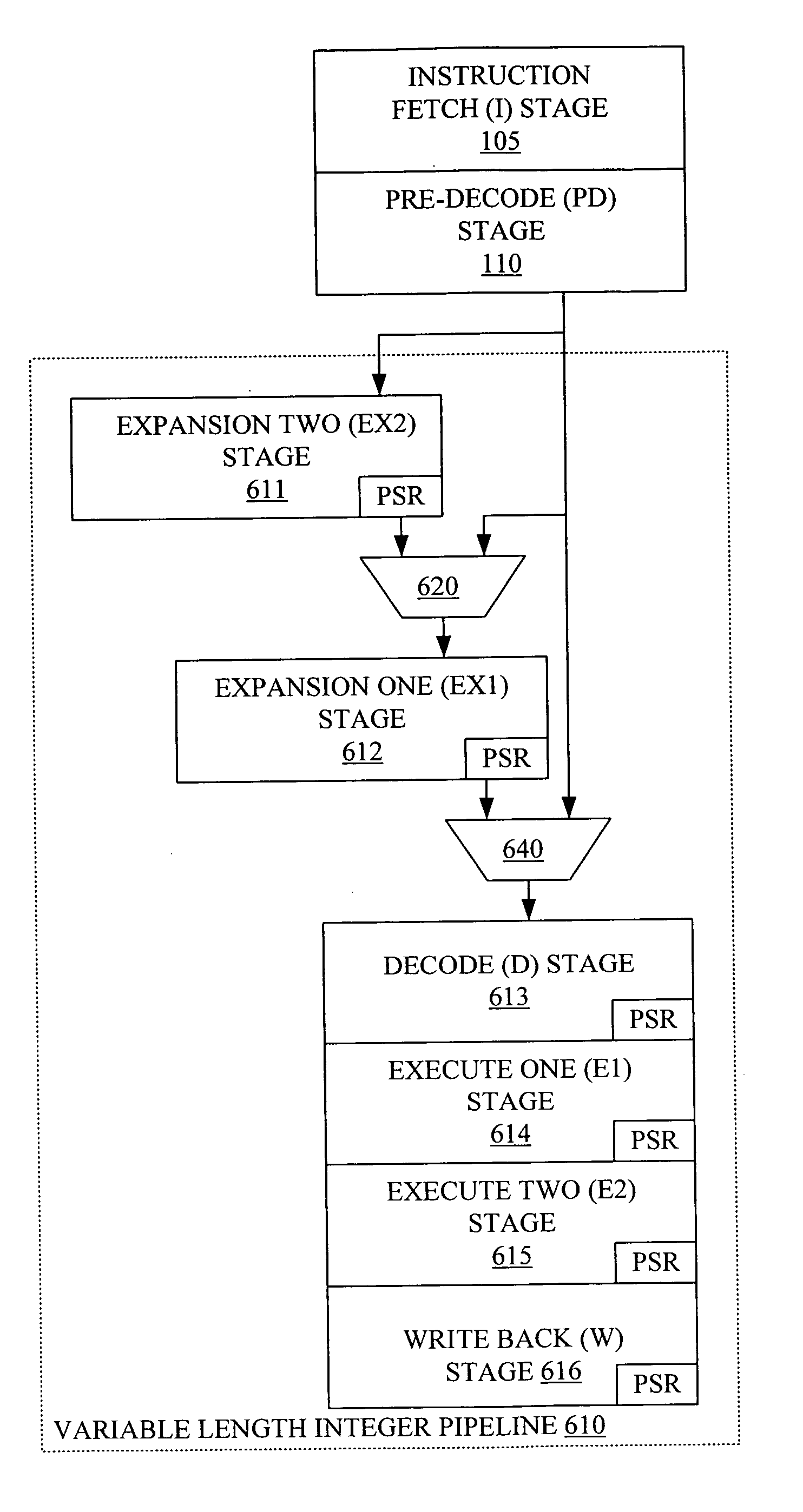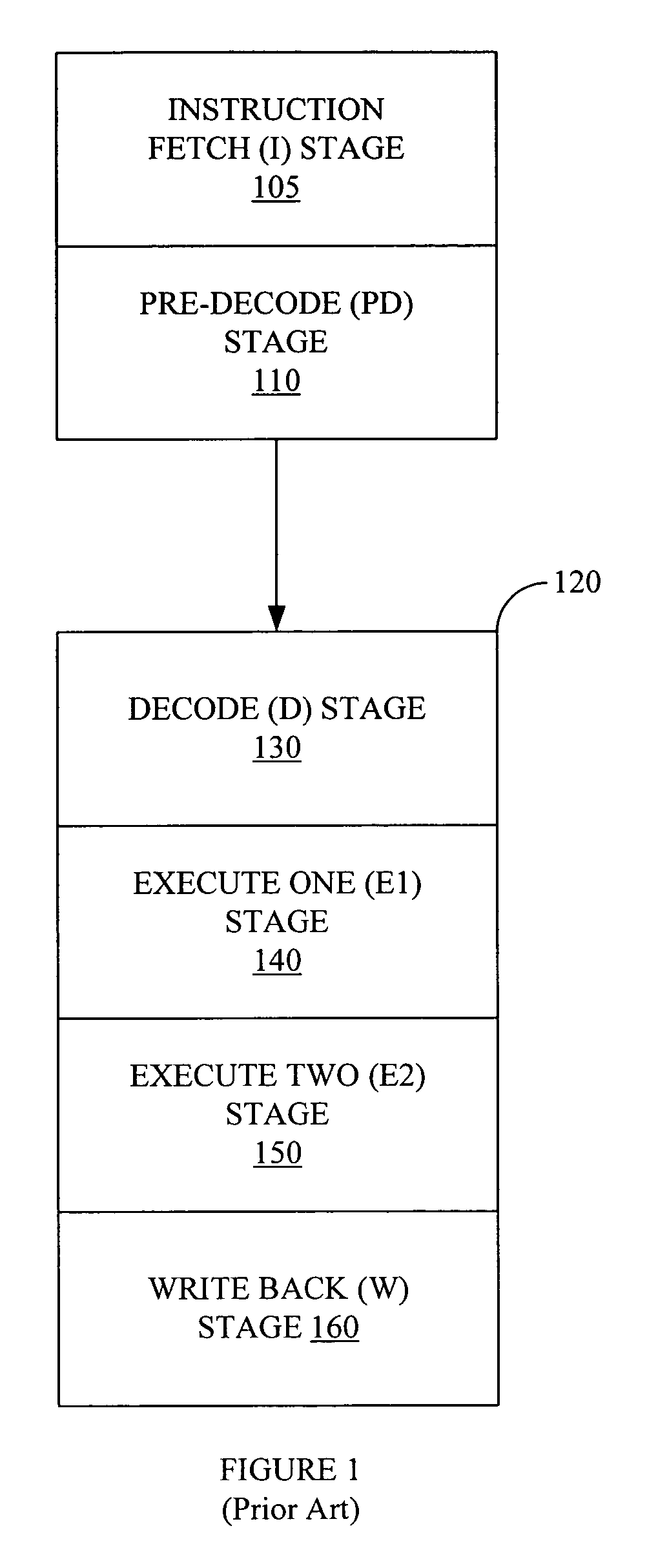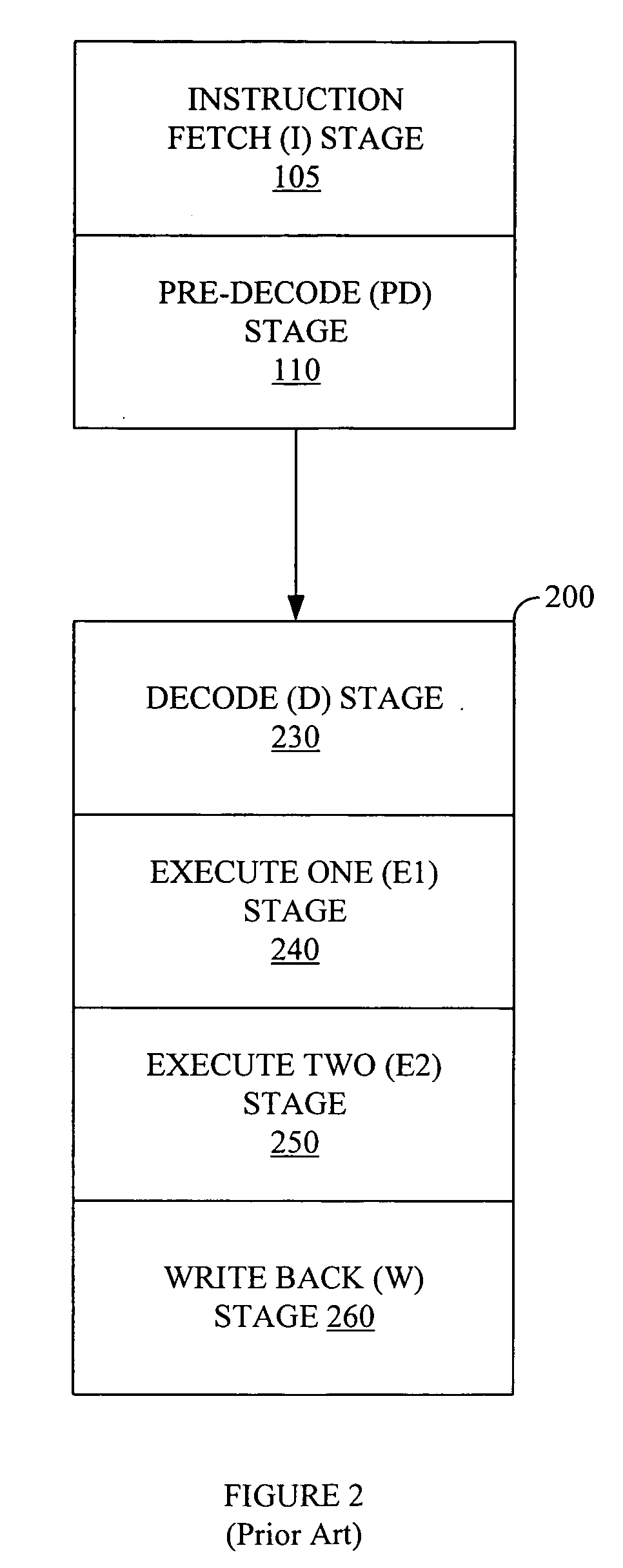Controlling out of order execution pipelines issue tagging
- Summary
- Abstract
- Description
- Claims
- Application Information
AI Technical Summary
Benefits of technology
Problems solved by technology
Method used
Image
Examples
Embodiment Construction
[0029]FIG. 6(a) is a block diagram of a variable length integer pipeline 610 in accordance with one embodiment of the present invention. Variable length integer pipeline 610 is coupled to instruction fetch stage 105, pre-decode stage 110 and includes decode stage 613, execute one stage 614, execute two stage 615, write back stage 616, an expansion one stage (EX1 stage) 611, an expansion two stage (EX2 stage) 612, a multiplexer 620, and an multiplexer 640. Variable length integer pipeline 610 can function as a four-stage pipeline, a five-stage pipeline or a six-stage pipeline. Other embodiments of the present invention may include more expansion stages to allow even greater flexibility. Furthermore, some embodiments of the present invention may use only a single expansion stage. For clarity, the examples described herein use a variable length integer pipeline, however the principles of the present invention can be adapted for use with any type of instruction pipelines.
[0030] Due to ...
PUM
 Login to View More
Login to View More Abstract
Description
Claims
Application Information
 Login to View More
Login to View More - R&D
- Intellectual Property
- Life Sciences
- Materials
- Tech Scout
- Unparalleled Data Quality
- Higher Quality Content
- 60% Fewer Hallucinations
Browse by: Latest US Patents, China's latest patents, Technical Efficacy Thesaurus, Application Domain, Technology Topic, Popular Technical Reports.
© 2025 PatSnap. All rights reserved.Legal|Privacy policy|Modern Slavery Act Transparency Statement|Sitemap|About US| Contact US: help@patsnap.com



